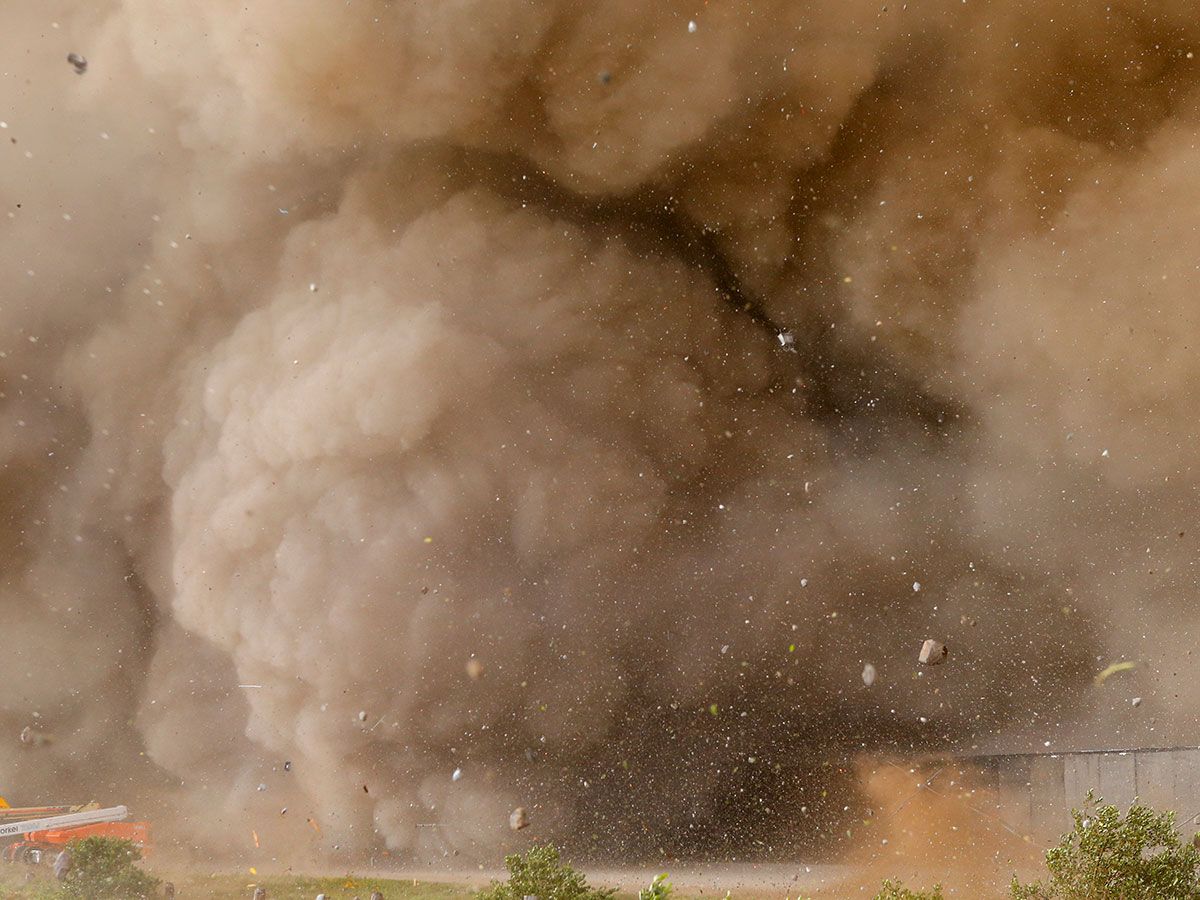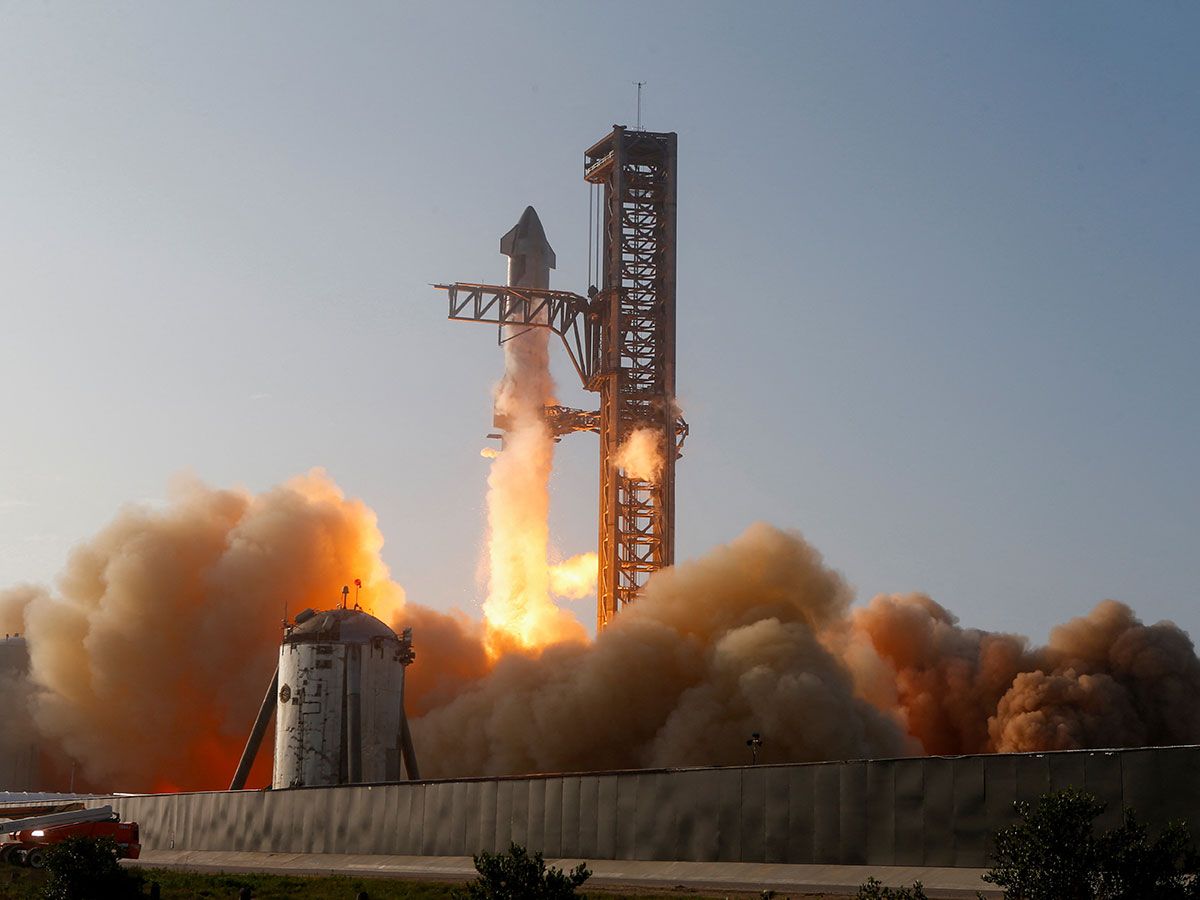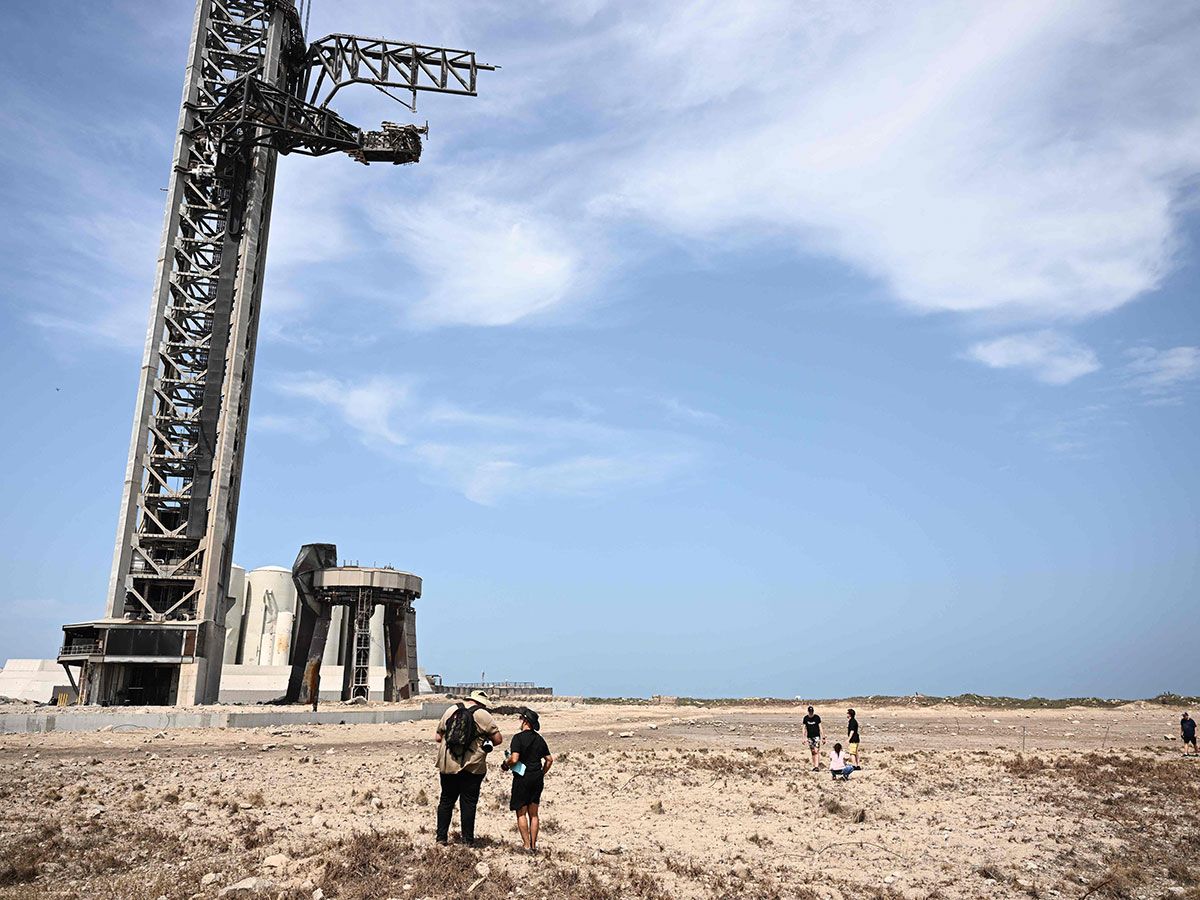The Giant SpaceX Rocket Starship Has Left A Crater And Caused Significant Damage At Its Texas Base.
Photos from the launch site show the massive launch tower still standing and the rocket mount, which supports Starship before liftoff, which is dented but still intact.

The tremendous strength of SpaceX’s maiden test flight of Starship, which is regarded to be the largest and most powerful rocket ever constructed, wreaked damage on its Texas launch site, resulting in flying pieces of concrete, twisted metal sheets, and holes driven deep into the earth. Repairing the damage caused by the unmanned test flight is predicted to take months, potentially delaying future launch attempts and stalling the construction of a rocket that NASA hopes to deploy on its planned Moon missions.
Elon Musk, CEO of SpaceX, stated before the test that putting Starship into the air without destroying its launch site would be a victory. Fortunately for Musk, the 390-foot-tall (120-meter) rocket successfully launched, soaring for nearly four minutes before collapsing and exploding over the Gulf of Mexico.

However, SpaceX engineers may have overestimated the impact of Starship’s 33 first-stage rocket engines. During departure, a shower of debris were discharged to the Gulf of Mexico, nearly 1,400 feet (420 metres) away. A cloud of dust flowed over a tiny village many miles distant. Photos from the launch site show the massive launch tower still standing and the rocket mount, which supports Starship before liftoff, which is dented but still intact.
Images shared on social media illustrated a massive hole under it. Musk said on Twitter, another firm in his portfolio, that the power of the engines because they throttled up may have fractured the concrete rather than merely degrading it.
A month’s delay because of Starship damage.
According to Olivier de Weck, an MIT professor of astronautics and engineering, the radius of debris and disruption was undoubtedly more immense than anyone predicted. The immediate damage to the launch pad is underground, where the flames impact the earth, and rebuilding the crater will take several months.
De Weck stated that, unlike earlier launch sites for such massive rockets, Starship’s lacked a “water deluge system.” These are used to wet the pad, chill it and absorb stress and sound vibrations. The Texas site lacks a flame trench, which are tunnels that divert hot exhaust away from the pad. The qualities will knock the door at a bulky cost, especially when they must withstand the earth-shattering strength of Starship.

Musk said following the test that SpaceX has commenced construction of a large water-cooled steel plate to fit under the launch platform. However, it was not completed in time, and engineers “wrongly” assessed that the pad could still withstand the test. Musk, known for his bold goal-setting, believes the next launch attempt may occur within 1-2 months.”
Steel is being melted.
Scientist Philip Metzger, who formerly worked for NASA on launch pad physics, believes the steel plate design may have succeeded. He went on to say that because this is such a massive rocket and it takes so long to get off the pad, the heat from the rocket’s 33 engines may melts the steel. That may be remedied by pumping water through steel pipes with a high enough flow rate. He admitted that the strategy would not completely remove the problem of shock waves, but he believes Starship was built to be strong enough to survive.
Metzger said that designing a launch pad may be that difficult as creating a rocket. The launch of NASA’s new mega-rocket, the SLS, in November caused damage to its launch pad in Florida, including the shutdown of launch-tower elevators.
Before its next test flight, SpaceX will need to pinpoint the source of the issues. Several of Starship’s 33 engines seemed to malfunction in a video published by the corporation. The rocket’s two stages failed to split as the way it was planned, requiring SpaceX to activate a self-destruct mechanism. According to de Weck, the private aerospace corporation will need to persuade the Federal Aviation Administration (FAA) to authorise a new trip.

Disclosure.
The US organisation in charge of the probe into the explosion has determined that no deaths were sustained due to the test. It has said that no further testing will be permitted if public safety is jeopardised. De Weck agreed with Musk’s assessment of the trial, calling it a success rather than a failure. The MIT professor went on to say that people are receiving these great talents because they are ready to take chances and damage things. However, they rapidly comprehend their mistakes and grow.




